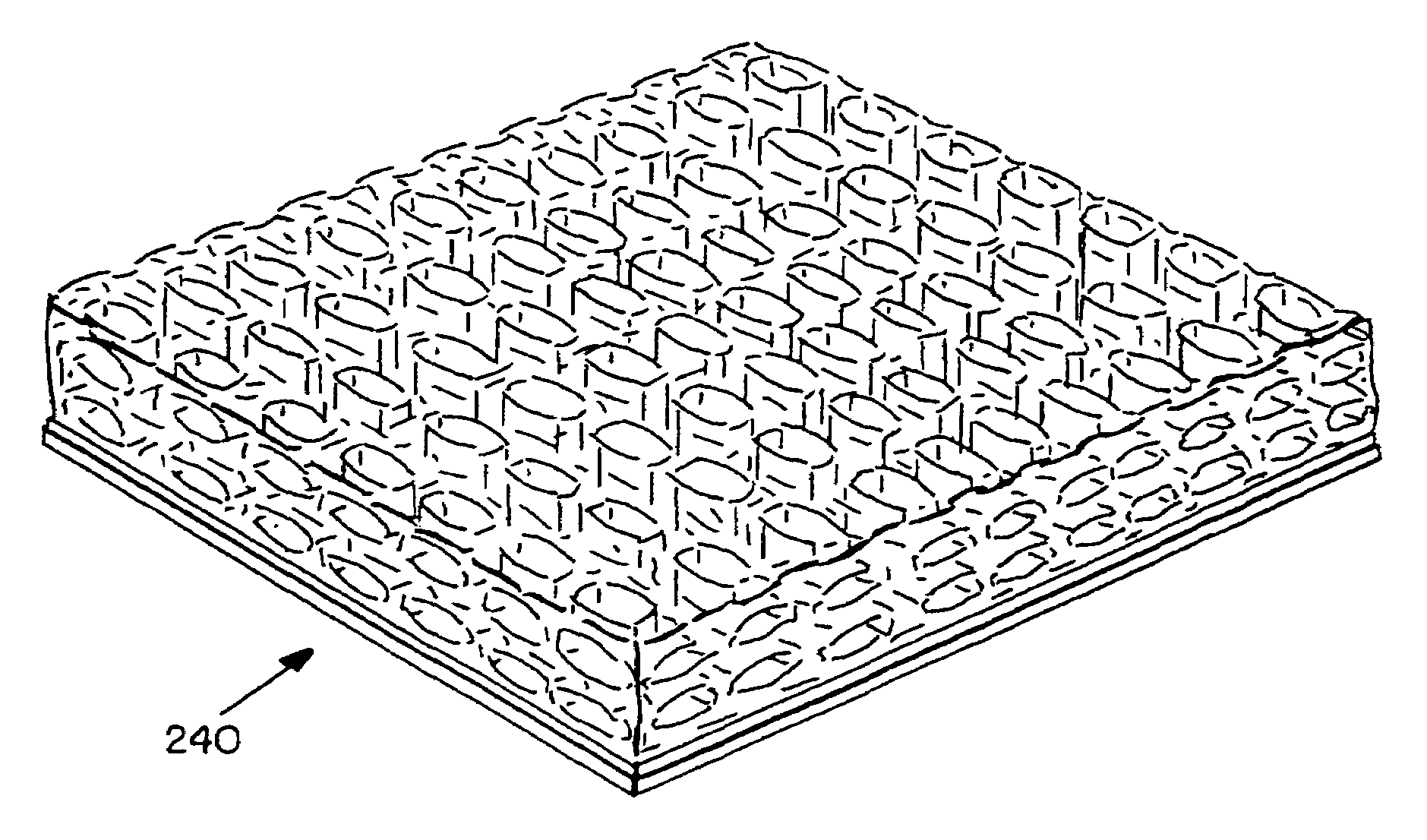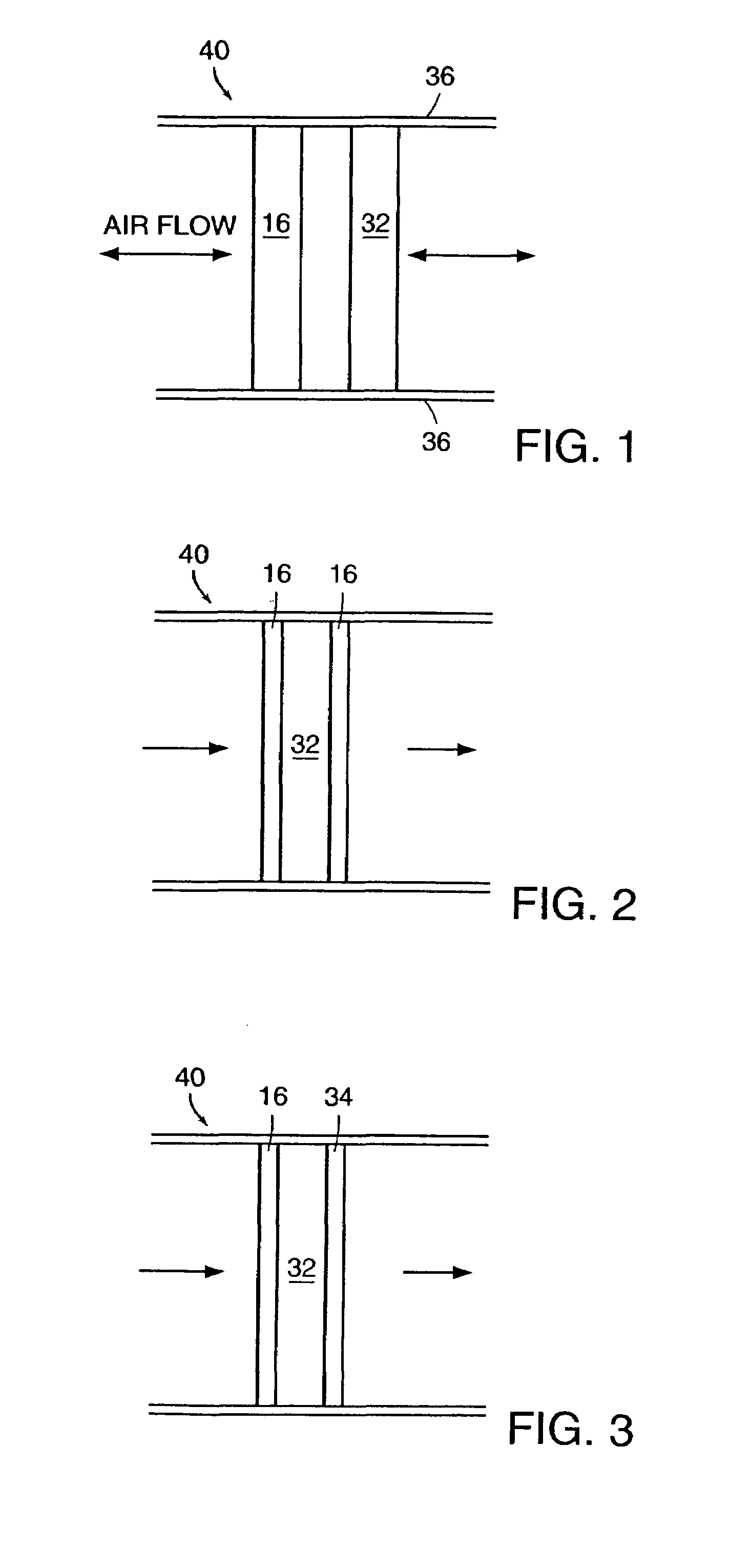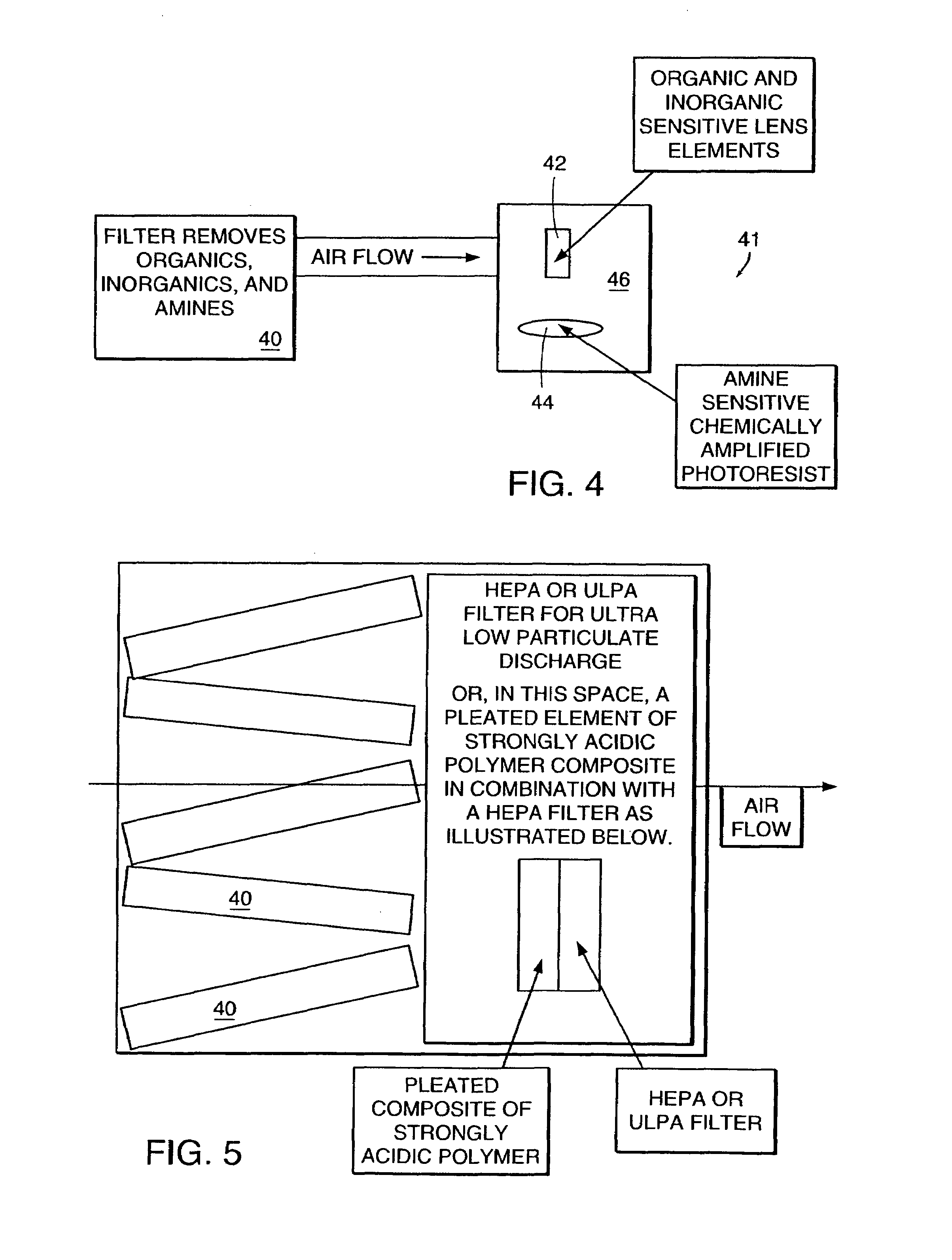Filters employing both acidic polymers and physical-adsorption media
a technology of acidic polymers and filters, applied in auxillary pretreatment, separation processes, other chemical processes, etc., can solve the problem that none of these aforementioned prior art approaches fully achieve the desired properties, and achieve the effect of enhancing contaminant removal efficiency and contaminant removal efficiency
- Summary
- Abstract
- Description
- Claims
- Application Information
AI Technical Summary
Benefits of technology
Problems solved by technology
Method used
Image
Examples
Embodiment Construction
[0048]A description of preferred embodiments of the invention follows. A fluid-permeable filter includes chemisorptive media and physisorptive media. Each of these two types of media can be in separate filter elements. The embodiment illustrated in FIG. 1 includes a chemisorptive filter element 16 and a physisorptive filter element 32 mounted within a conduit 36. In an alternative embodiment, illustrated in FIG. 2, the chemisorptive filter element 16 can form a layer attached to one or both sides of the physisorptive filter element 32. Additionally, an electrostatically-charged nonwoven filter material 34 can cover the chemisorptive and physisorptive filter elements 16, 32, as shown in FIG. 3.
[0049]The chemisorptive filter element 16 includes porous, chemisorptive media formed with a copolymer having an acidic functional group that enables the group to react with a reagent. The physisorptive filter element 32 includes media, such as untreated, activated carbon. The term, “untreated,...
PUM
| Property | Measurement | Unit |
|---|---|---|
| boiling point | aaaaa | aaaaa |
| pore size | aaaaa | aaaaa |
| temperature | aaaaa | aaaaa |
Abstract
Description
Claims
Application Information
 Login to View More
Login to View More - R&D
- Intellectual Property
- Life Sciences
- Materials
- Tech Scout
- Unparalleled Data Quality
- Higher Quality Content
- 60% Fewer Hallucinations
Browse by: Latest US Patents, China's latest patents, Technical Efficacy Thesaurus, Application Domain, Technology Topic, Popular Technical Reports.
© 2025 PatSnap. All rights reserved.Legal|Privacy policy|Modern Slavery Act Transparency Statement|Sitemap|About US| Contact US: help@patsnap.com



